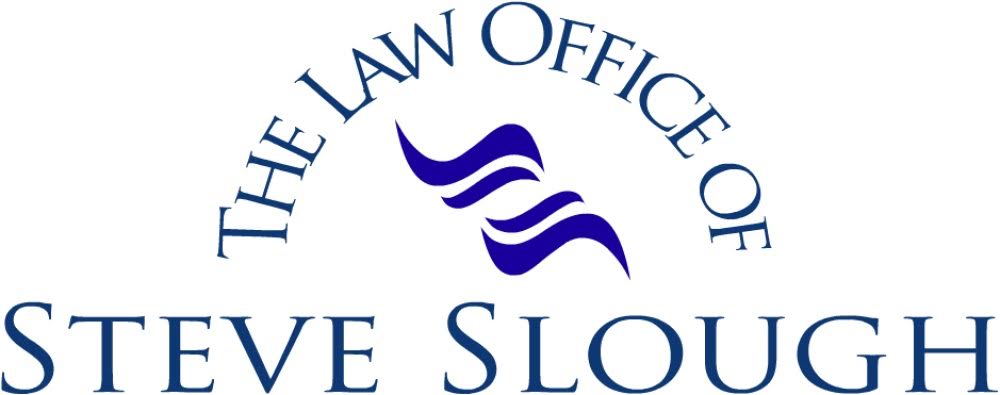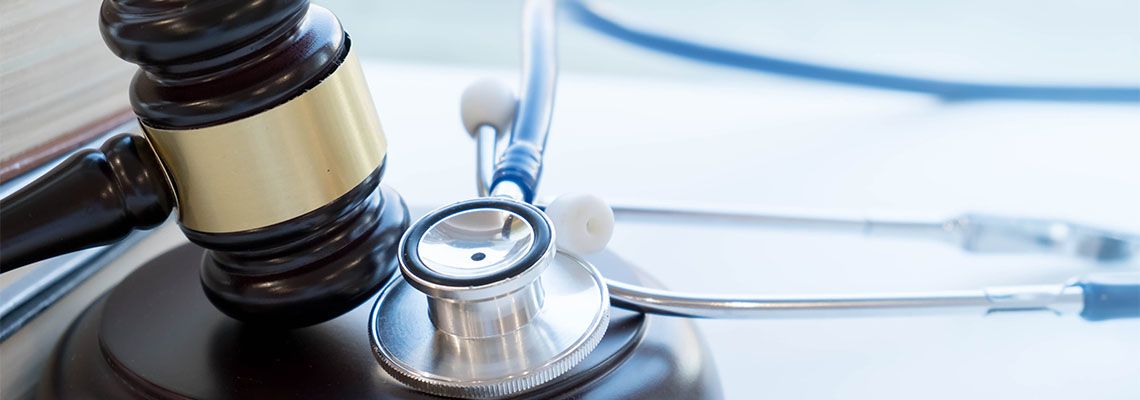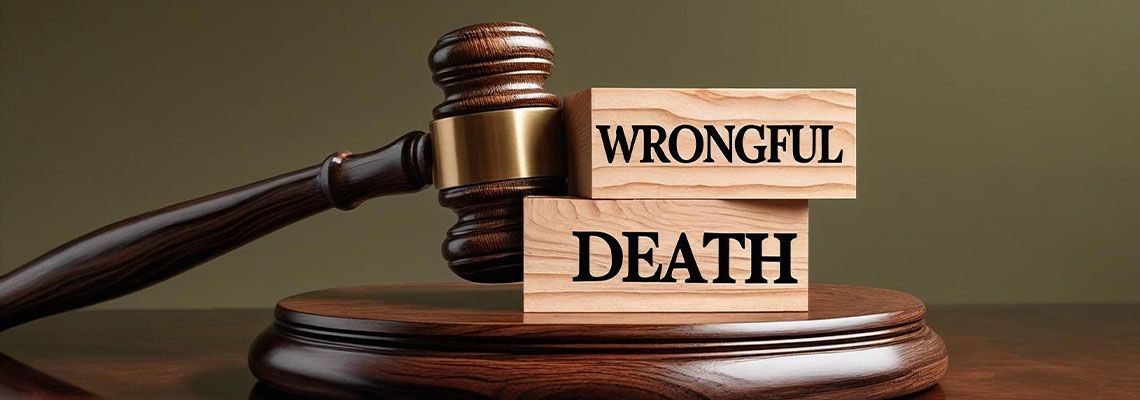When a product fails to perform safely or as intended, the consequences can be devastating. Victims may face serious injuries, permanent disabilities, or overwhelming financial losses, and defective product claims often involve detailed technical, scientific, and medical details that go far beyond ordinary knowledge.

Understanding Liability in Multi-Vehicle Rear-End Crashes
Multi-vehicle rear-end crashes are among the most chaotic types of car accidents we see on the roads. These collisions often involve more than two vehicles and can result in a chain reaction of impacts. When we're dealing with injuries, property damage, and conflicting statements, it becomes critical to understand who may be legally responsible.
At The Law Office of Steve Slough, we help our injured clients work through these challenges and assess how fault is determined. Our experienced rear end collicion attorney serves communities in St. Louis, Missouri, and surrounding areas, including St. Louis County, St. Charles County, and Madison County, as well as St. Clair County, Illinois.
When someone suffers injuries in a multi-vehicle rear-end collision, a personal injury claim can help cover medical bills, lost wages, and other related expenses.
Although these crashes often appear straightforward—after all, rear drivers are usually blamed—multi-vehicle accidents are rarely that simple. Determining who’s at fault can require a detailed look at the timing of each collision, driver behavior, and road conditions.
Let's explore liability in these scenarios and understand how personal injury laws apply, especially when multiple parties may be involved.
How Multi-Vehicle Rear-End Crashes Typically Occur
To fully understand liability, we have to look at how these crashes unfold. Most rear-end collisions happen because one driver fails to stop in time. But when more than two vehicles are involved, the scenario becomes far more layered.
A chain reaction crash typically starts when one car hits another, which then hits the next. These types of accidents often occur in:
Heavy traffic or stop-and-go conditions: Drivers may follow too closely and not have time to stop.
Distracted driving situations: A driver who’s texting or not paying attention may miss brake lights ahead.
Poor weather conditions: Rain, snow, or fog can reduce visibility and braking ability.
Sudden stops: If the lead vehicle stops abruptly and multiple vehicles are following too closely, a domino effect can occur.
These scenarios highlight just how quickly a chain reaction can unfold—and how easily one driver’s mistake can impact several others. Understanding the common causes behind these crashes is the first step in identifying who may be responsible.
Whether it’s poor visibility, distracted driving, or simply following too closely, each contributing factor plays a role in determining liability and the path forward for those seeking compensation.
The Fault Doesn’t Always Lie With the Last Car
While it's common to assume the last driver is at fault, that’s not always true. In some cases, the middle or lead driver may share responsibility. For example, if a car cuts off another driver and then slams on the brakes, it may trigger a crash that looks like a rear-end collision but actually stems from aggressive driving. So, who’s at fault—and how do we prove it? That leads to how liability is assessed in these cases.
Determining Liability in Chain Reaction Accidents
Determining liability in a multi-vehicle rear-end collision involves analyzing the sequence of events, often relying on police reports, witness accounts, and crash reconstruction.
Factors Used to Assess Fault
Several elements help determine which driver—or drivers—contributed to the crash:
Vehicle damage analysis: The location and severity of the damage can suggest the direction and force of the impact.
Driver statements: What each driver says immediately after the crash (and to the police) can impact fault assessments.
Traffic camera or dashcam footage: These recordings offer neutral accounts of how the crash happened.
Skid marks and debris patterns: Physical evidence at the scene can show the order in which cars collided.
Because multi-vehicle accidents often involve multiple impacts and conflicting accounts, determining liability isn’t always straightforward. By carefully analyzing physical evidence, driver statements, and available footage, investigators can begin to piece together the chain of events.
This thorough approach is essential not only for identifying who was at fault but also for making sure that injured parties receive fair compensation for their losses.
Shared Fault and Comparative Negligence
Some states use a comparative negligence model, meaning each party can be assigned a percentage of fault. That percentage then impacts how much compensation each driver can collect in a personal injury claim. For example:
Driver A may be 80% at fault for failing to stop in time.
Driver B may be 20% at fault for not maintaining a safe distance from the car ahead.
When more than two drivers are involved, these percentages become even more important in settling injury claims and damages.
As we move forward, it’s useful to understand what types of injuries typically result from rear-end crashes and how those injuries play a role in personal injury cases.
Injuries Commonly Seen in Rear-End Collisions
Rear-end accidents, even at lower speeds, can cause significant injuries. The sudden jolt from behind can throw a person’s head, neck, and back out of alignment, leading to painful and sometimes long-lasting effects.
Injuries Suffered in Multi-Car Accidents
Multi-vehicle rear-end crashes don’t just cause vehicle damage—they often result in serious, sometimes life-altering injuries. The force of multiple impacts can amplify the harm to those involved, especially when drivers and passengers are caught between colliding vehicles.
From soft tissue damage to head trauma and broken bones, the injuries sustained in these accidents can lead to significant medical expenses and long recovery periods. Understanding the types of injuries commonly seen in these crashes is key to recognizing their impact and to building a strong personal injury claim.
Whiplash and neck injuries: The back-and-forth motion of the head can strain or tear soft tissues.
Back and spinal injuries: Herniated discs, spinal fractures, and nerve damage are common after a hard impact.
Head trauma: Even if there’s no direct hit, the brain can be injured due to sudden movement inside the skull.
Broken bones and fractures: Arms, ribs, and legs can be injured when bracing against impact or hitting parts of the vehicle.
Facial injuries: Airbags, broken glass, or striking the dashboard can cause cuts, bruises, or even eye injuries.
These injuries often require medical treatment, time off work, and sometimes surgery or long-term physical therapy. Filing a personal injury claim allows injured individuals to seek compensation for these costs, along with pain and suffering.
When multiple drivers are involved and liability is disputed, it's even more critical to begin collecting evidence early to protect the value of the claim.
Steps to Take After a Multi-Vehicle Rear-End Crash
In the chaotic aftermath of a multi-vehicle rear-end crash, it’s easy to feel overwhelmed. However, the actions you take in those first moments can significantly impact any future legal claim.
In addition to checking on everyone's safety and addressing urgent medical needs, collecting evidence and documenting the scene is vital when multiple drivers and insurance companies are involved. Taking the proper steps immediately safeguards your health, protects your rights, and strengthens your ability to seek fair compensation for your injuries and losses.
Call emergency services: Police and medical responders should be contacted, even if injuries seem minor.
Take photos and videos: Capture the damage, road conditions, and positions of all vehicles involved.
Exchange information with all drivers: Get names, contact details, insurance info, and license plate numbers.
Talk to witnesses: If others saw the crash, ask for their contact details—they can help clarify who did what.
Seek medical care: Even if you feel okay, see a doctor. Some injuries don't show symptoms right away.
The next few days are just as important as the minutes after the crash. Promptly reporting injuries and getting legal advice can strengthen your claim.
Managing Insurance Challenges After a Multi-Vehicle Crash
When multiple drivers are involved in a rear-end collision, insurance companies often debate liability. Each insurer may try to minimize their client’s responsibility, which can delay or complicate payouts.
Request for statements: Adjusters will often ask for recorded interviews. These should be approached carefully.
Disputes over fault: If no clear-cut cause is found, insurers may deny liability altogether.
Low settlement offers: In multi-car accidents, companies may offer less than what a claim is worth, especially if they expect the injured party won’t challenge it.
That’s why involving a lawyer can be so important. We help gather and present the right evidence to hold the correct parties accountable. This includes working with accident reconstruction professionals when needed.
We also help determine whether other legal options may apply, like pursuing additional damages in cases involving reckless behavior.
Personal Injury Claims in Multi-Vehicle Crashes
Filing a personal injury claim allows victims to recover compensation for a variety of losses. But when more than one person may be at fault, these claims can be more challenging to work through.
Medical expenses: This includes hospital stays, follow-up care, medications, and future treatments.
Lost wages: If injuries keep you from working, you may be entitled to income replacement.
Pain and suffering: Compensation for emotional distress, physical pain, and reduced quality of life.
Vehicle damage: Repairs or replacement of your car, even if you're not the registered owner.
Loss of earning potential: For serious injuries that change your ability to work long-term.
These claims are often resolved through settlement, but they may also proceed to court if the insurance companies won’t accept liability or offer fair compensation.
How Fault Impacts Your Compensation
Under comparative fault rules, the amount you receive depends on how much blame is assigned to you. If you’re found 30% at fault, and the total damages equal $100,000, you could still recover $70,000.
But if your share of the blame crosses a certain threshold (in some states, 50% or 51%), you may not be able to recover anything. That’s why it's important to challenge any inflated accusations of fault that insurance companies may try to use against you. Every percentage point matters—and so does the quality of the evidence supporting your claim.
Why Multi-Car Crashes Need Detailed Investigations
When more than two vehicles are involved, determining fault often requires more than a police report. It may involve technical analysis, professional testimony, and a careful review of the crash sequence.
Collect and preserve evidence: Including photographs, medical records, and witness statements.
Work with crash reconstruction professionals: To understand how the accident unfolded.
Communicate with all insurance companies: So our clients don't have to handle that stress.
Calculate long-term damages: Including future lost wages or medical needs.
Negotiate or litigate as needed: We prepare every case for the possibility of trial, which often leads to better settlement offers.
In personal injury cases involving multi-vehicle rear-end crashes, thorough preparation can make a significant difference in how much our clients recover and how quickly they can move forward with their lives.
Reach Out to Our Rear End Collision Attorney
If you've been injured in a multi-vehicle rear-end collision and are dealing with medical bills, missed work, or ongoing pain, The Law Office of Steve Slough is here to help. We serve St. Louis and its surrounding areas of St. Charles County, Madison County, Missouri, and St. Clair County, Illinois. We can help you understand your rights and pursue your personal injury claim. Call now to schedule a consultation.
RECENT POSTS
Medical malpractice can be one of the most stressful and emotional experiences a person faces. When you or a loved one suffers harm due to a medical professional's mistake, the emotional and financial impact can be overwhelming. Filing a medical malpractice claim requires careful preparation and attention to detail.




